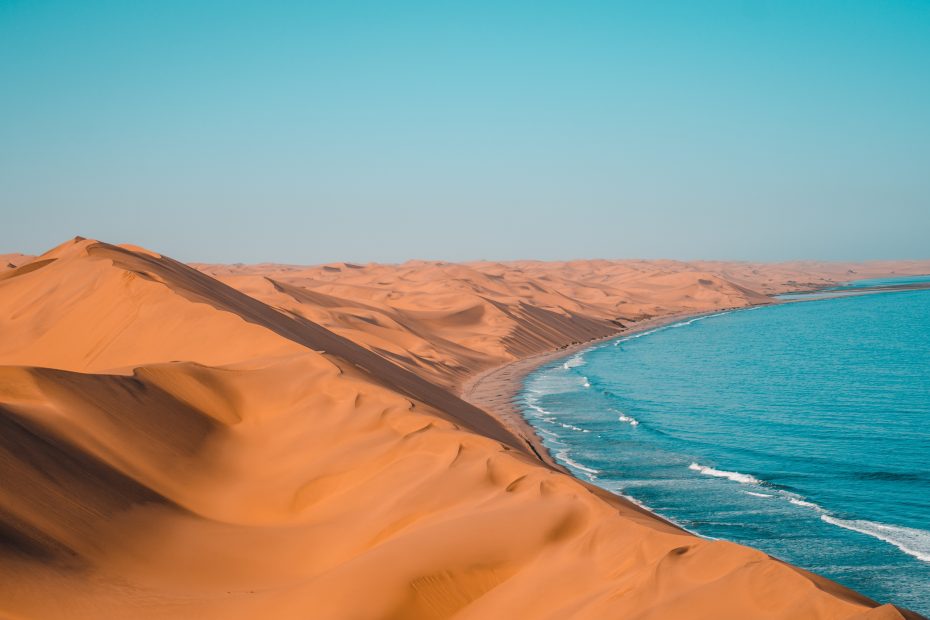Table of Contents
Introduction
Nestled along the southwestern coast of Africa, Namibia is a country of immense contrasts. From its Atlantic coastal deserts to its inland savannahs, and from its indigenous tribal traditions to the lingering influence of German colonization, Namibia juxtaposes landscapes, cultures, and wildlife in intriguing ways. This article explores some of Namibia’s most striking contrasts, illuminating how they contribute to the country’s distinctive character.
Landscape Contrasts
Namibia’s western edge consists of the Namib Desert, an arid coastal region featuring some of the tallest sand dunes in the world. Moving farther inland, the landscape transitions to more vegetated savannahs and tableland plateaus. Namibia also contains the northern reaches of the Kalahari Desert, as well as wetlands like the Okavango River delta teeming with wildlife. The west is dry and sandy, while parts of the north and east are lush and wet.
In terms of topology, Namibia contrasts rugged mountain ranges rising from the central highlands with more than 1,000 miles of desert coastline. Sossusvlei is home to iconic red sand dunes, while mountains like Spitzkoppe and Erongo contain caves filled with ancient rock art. The juxtaposition of endless sand seas and solitary mountain outcrops makes for striking scenery.
Cultural Contrasts
Namibia’s cultural landscape showcases indigenous groups as well as the lasting imprint of German colonization. Groups like the Himba and San maintain long-held customs and languages, while signs of Namibia’s colonial history persist in architecture, food, and place names. This blending of tradition and outside influence makes for a rich cultural tapestry.
In northern Namibia, Himba women wear intricate hairstyles and traditional garb including otjize, a mix of butterfat and ochre. Meanwhile, the San people maintain a hunter-gatherer way of life in the Kalahari. In central Namibia, Germanic architecture punctuates cities like Swakopmund and Luederitz alongside local open-air markets. Namibia also boasts cuisine fusing German staples like schnitzel with native ingredients and flavors.
Another contrast appears between modern coastal cities like Walvis Bay and Windhoek, Namibia’s capital, versus rural communal villages where life moves at a different pace. From tech startups to timeless family farms, Namibia integrates progress and tradition.
Wildlife Contrasts
As a sparse yet varied landscape, Namibia hosts an array of contrasting wildlife specially adapted to desert, savannah, woodland, and wetland ecosystems. Iconic desert species include oryx, springbok, and brown hyena. Meanwhile, lions, elephants, and hippos thrive in water-rich regions like Etosha National Park.
Namibia’s dune sea, rocky plateaus, and coastal waters contain highly endemic species, many endangered like the black rhino and desert elephant. Conservation efforts safeguard Namibia’s distinct flora and fauna. The country contrasts not only desert and savannah species, but also marine life along its Atlantic seaboard and unique cave-dwelling creatures.
Conclusion
From the Namib to the Kalahari, the Himba to German architecture, Namibia intrigues visitors with its mosaic of contrasts. Coastal dunes, inland oases, indigenous heritage, colonial legacies, and endangered wildlife all intersect against a dramatic desert backdrop. Namibia’s contrasts highlight the country’s diverse ecology and cultures. By preserving its mosaic of landscapes, traditions, and species, Namibia continues to offer an unforgettable adventure of contrasts for travelers.
FAQs
What are some of Namibia’s main geographical contrasts?
Namibia contrasts extremely arid coastal deserts along the Atlantic with more well-watered inland plateaus and savannahs. It also juxtaposes endless sand dunes with stark mountain ranges and canyons.
How is German influence still seen in Namibia today?
Namibia exhibits German colonial influences through its architecture, cuisine, place names, and educational system. Many buildings in cities feature prominent German styles.
What are some key differences between Namibia’s coastal and inland regions?
The coast is dominated by the sandy Namib Desert, while inland areas feature more vegetation and wildlife, especially in the northeast. The coast relies more on fishing, while agriculture and cattle raising occur inland.
How does Namibia contrast indigenous cultures with outside influences?
Groups like the Himba and San maintain age-old customs, while Namibia also exhibits influences from German colonization and globalization through foreign languages, religions, technologies, and clothing.
What efforts does Namibia make to protect its wildlife?
Namibia devotes large areas of land to national parks and reserves. It has reintroduced endangered species like cheetahs and black rhinos. Tourism and trophy hunting support conservation.
